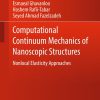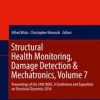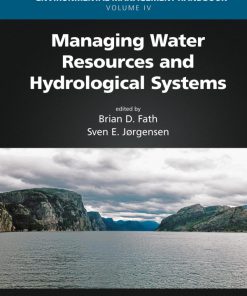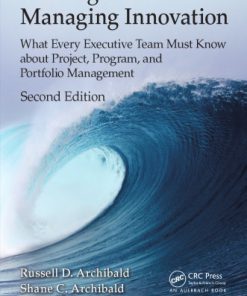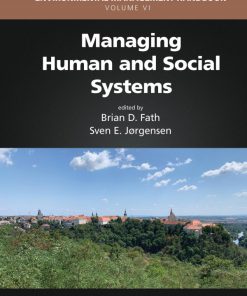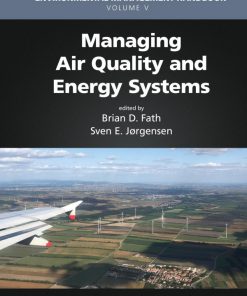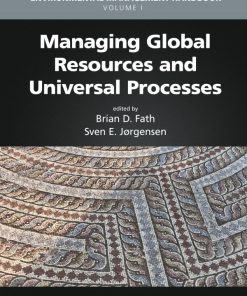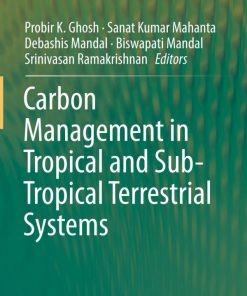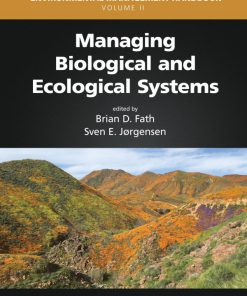Managing Soils and Terrestrial Systems 2nd Edition by Brian Fath, Sven Erik Jorgensen ISBN 1000067769 9781000067767
$50.00 Original price was: $50.00.$25.00Current price is: $25.00.
Managing Soils and Terrestrial Systems 2nd Edition BY Brian D. Fath, Sven Erik Jorgensen – Ebook PDF Instant Download/Delivery: 1000067769, 978- 1000067767
Full download Managing Soils and Terrestrial Systems 2nd Edition after payment
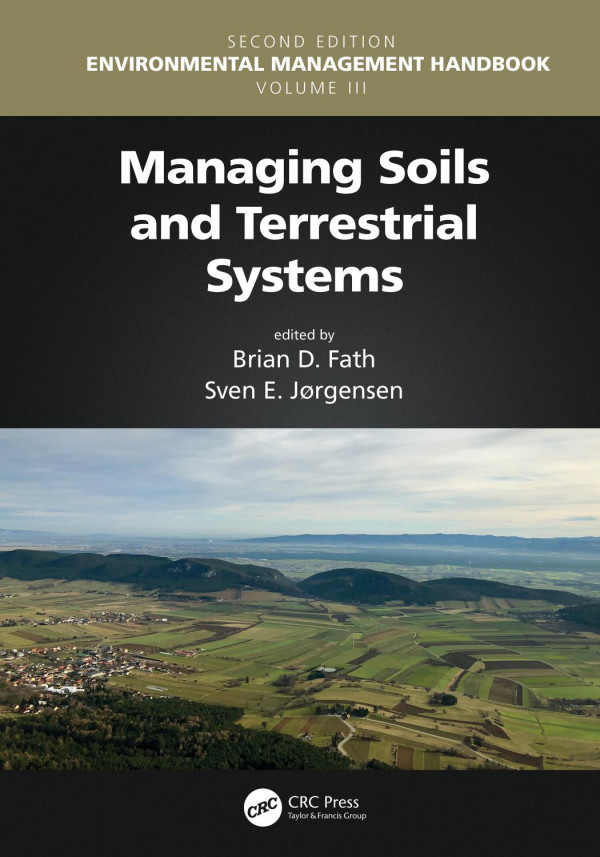
Product details:
ISBN 10: 1000067769
ISBN 13: 978-1000067767
Author: Brian D. Fath, Sven Erik Jorgensen
Bringing together a wealth of knowledge, Environmental Management Handbook, Second Edition, gives a comprehensive overview of environmental problems, their sources, their assessment, and their solutions. Through in-depth entries and a topical table of contents, readers will quickly find answers to questions about environmental problems and their corresponding management issues. This six-volume set is a reimagining of the award-winning Encyclopedia of Environmental Management, published in 2013, and features insights from more than 400 contributors, all experts in their field.
The experience, evidence, methods, and models used in studying environmental management are presented here in six stand-alone volumes, arranged along the major environmental systems.
Features
- The first handbook that demonstrates the key processes and provisions for enhancing environmental management
- Addresses new and cutting-edge topics on ecosystem services, resilience, sustainability, food–energy–water nexus, socio-ecological systems, and more
- Provides an excellent basic knowledge on environmental systems, explains how these systems function, and offers strategies on how to best manage them
- Includes the most important problems and solutions facing environmental management today
In this third volume, Managing Soils and Terrestrial Systems, the general concepts and processes of the geosphere with its related soil and terrestrial systems are introduced. It explains how these systems function and provides strategies on how to best manage them. It serves as an excellent resource for finding basic knowledge on the geosphere systems and includes important problems and solutions that environmental managers face today. This book practically demonstrates the key processes, methods, and models used in studying environmental management.
Managing Soils and Terrestrial Systems 2nd Table of contents:
Section I: APC – Anthropogenic Chemicals
This section addresses the impact of human activities on the environment through the use of chemicals in agriculture and soil management. Topics include:
- Nitrous Oxide Emissions from agricultural soils, a major greenhouse gas.
- The energy use and conservation in agriculture, and the importance of adopting organic farming methods.
- Issues like erosion caused by water or irrigation, and the control of pesticide translocation to mitigate soil erosion and contamination.
- Salt-affected soils and sodic soils, which affect agriculture, especially in irrigation farming.
Section II: COV – Comparative Overviews of Important Topics for Environmental Management
This section provides comparative analyses of key topics in soil and environmental management:
- Biological cycling of carbon and nitrogen in agricultural soils, and the management of phosphorus.
- The global issue of erosion, particularly from wind and water, and how it relates to climate change and soil quality.
- Focus on sustainable agriculture, integrated farming systems, and organic soil amendments.
- Soil degradation and the impact of erosion on the carbon dioxide cycle.
Section III: CSS – Case Studies of Environmental Management
This section includes real-world case studies:
- Drought and agricultural production in the Central Andes, highlighting the regional challenges of water scarcity and crop production.
- Rehabilitation of open-cut mines, showing how environmental management can restore lands after mining activities.
Section IV: DIA – Diagnostic Tools: Monitoring, Ecological Modeling, Ecological Indicators, and Ecological Services
This section focuses on diagnostic tools and monitoring systems for environmental management:
- Carbon balance assessments for bioenergy crops, helping to measure their environmental impact.
- Erosion control methods, including empirical techniques and process-based modeling for both water and wind erosion.
- Pest management modeling and methods for assessing soil quality indicators.
Section V: ELE – Focus on Legislation or Policy to Address Environmental Problems
This section discusses policy frameworks and legislative measures to tackle environmental challenges:
- Management of acid sulfate soils and agricultural water quantity.
- Various methods for erosion control, including vegetative control and soil conservation practices.
- Emphasizes integrated pest management, nutrient management, and manure management practices for sustainable agriculture.
Section VI: ENT – Environmental Management Using Environmental Technologies
This section focuses on the use of environmental technologies to address soil and erosion problems:
- Reclamation of sodic soils, and techniques for controlling erosion and sediment through vegetative and engineering approaches.
- Precision agriculture with a focus on engineering aspects, allowing for more efficient farming practices.
Section VII: NEC – Natural Elements and Chemicals Found in Nature
Here, the natural elements and chemical processes in the environment are discussed:
- Wind-driven rain as a significant factor in erosion.
- The global distribution of organic matter in ecosystems, including how permafrost and salt-affected soils influence agricultural practices.
- How plants respond to salt-affected soils, emphasizing the challenges of farming in saline environments.
Section VIII: PRO – Basic Environmental Processes
This final section touches on fundamental environmental processes that drive changes in soil and land use:
- The impact of agricultural runoff on water systems.
- Issues of desertification, along with strategies for its prevention and restoration.
- The basic processes of erosion, with a focus on water erosivity and soil erodibility.
People also search for Managing Soils and Terrestrial Systems 2nd :
soil management techniques
the management of soil to limit its destruction
soil management strategies commercial farming system
ground management solutions
histosols soil characteristics
Tags:
Brian Fath,Sven Erik Jorgensen,Managing,Soils,Terrestrial,Systems 2nd
You may also like…
Business & Economics - Project Management
Leading and Managing Innovation 2nd Edition by Russell D Archibald ISBN 978-1138440265
Biology and other natural sciences - Ecology
Managing Biological and Ecological Systems 2nd Edition Brian D. Fath (Editor)
Business & Economics - Management & Leadership


